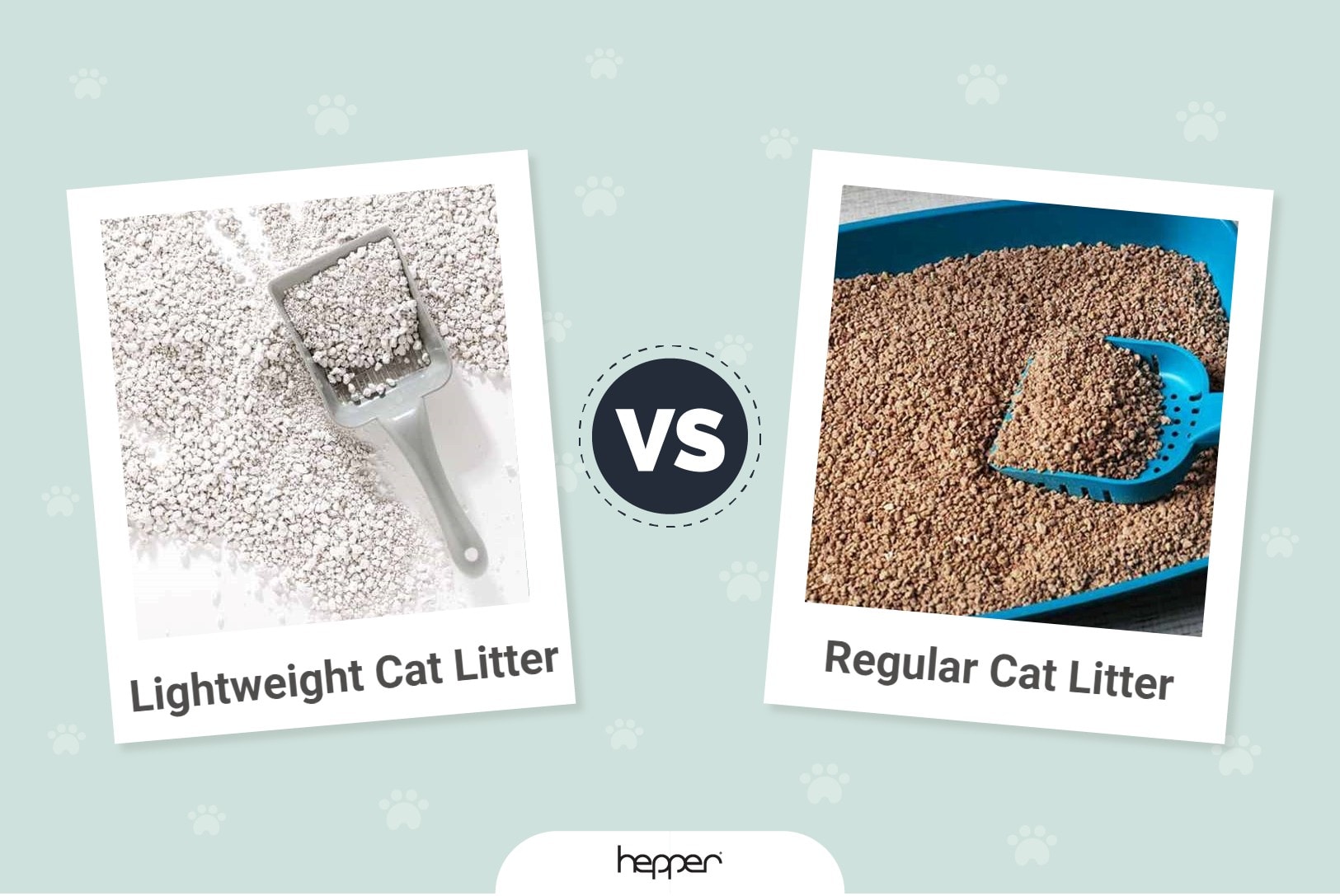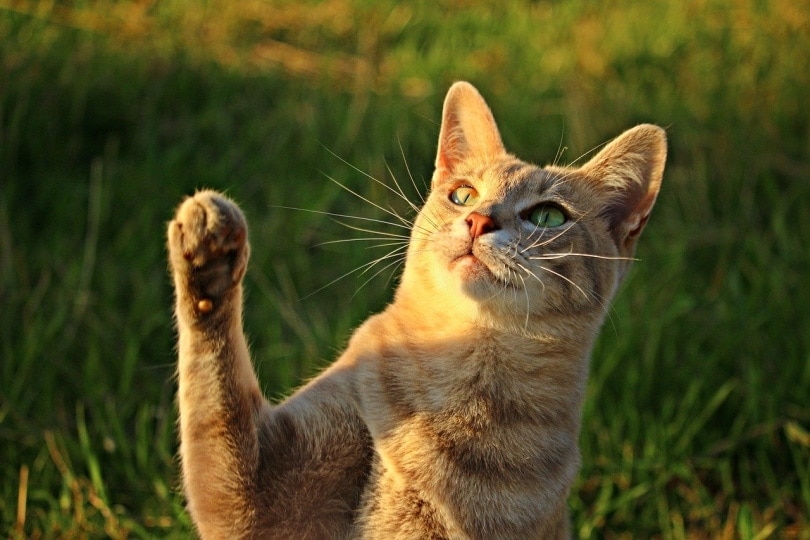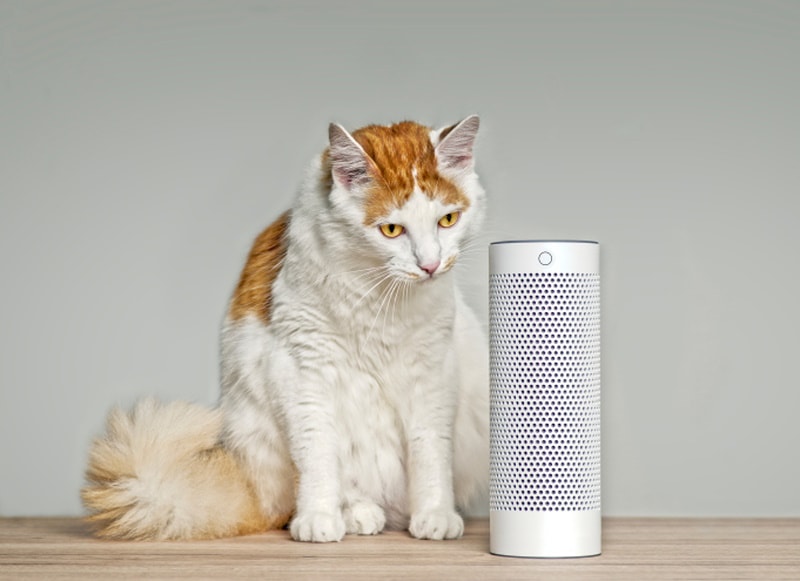Can Cats Eat Granola? Vet-Reviewed Nutritional Facts & Safety Guide
By Hallie Roddy
Updated on
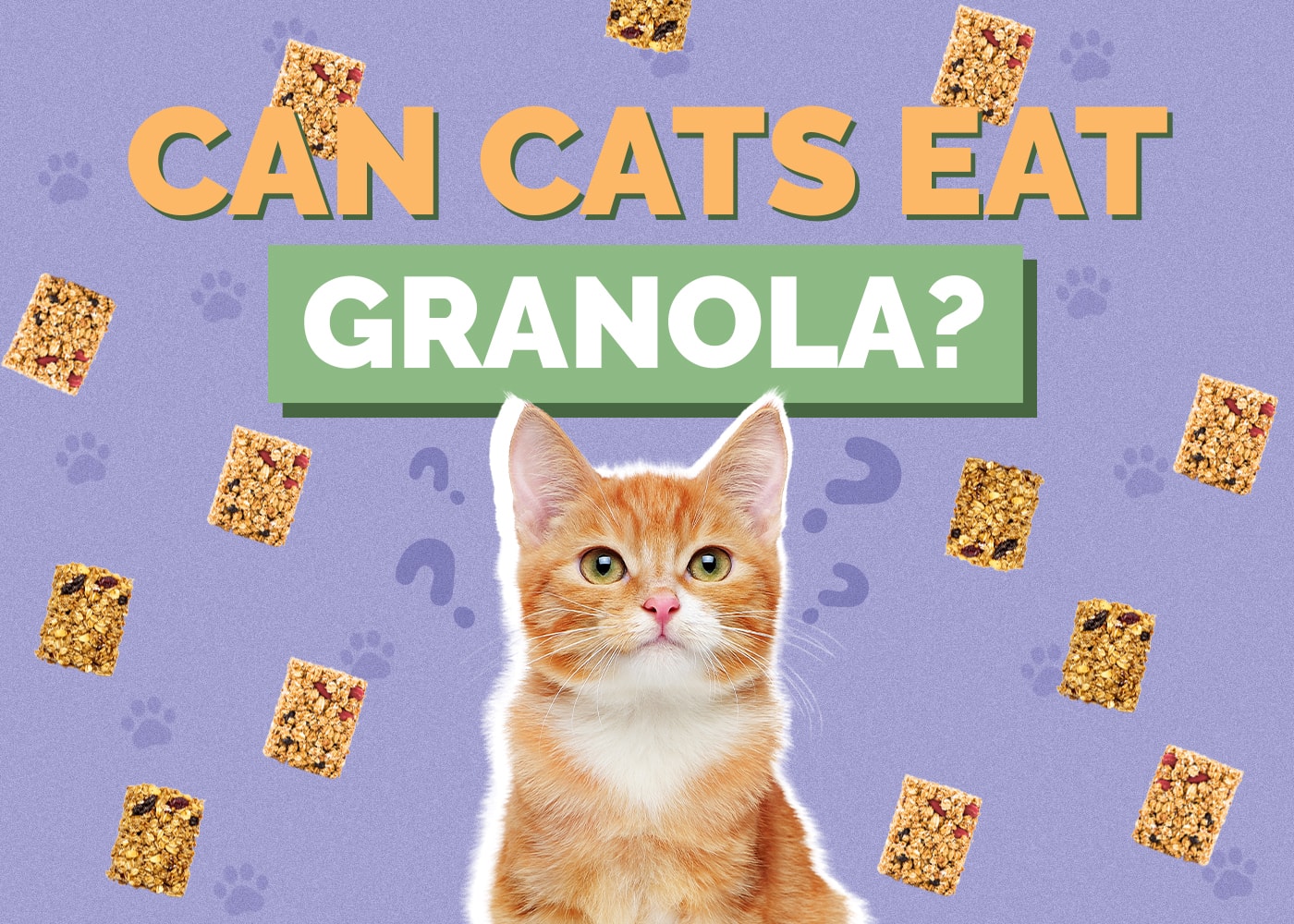
A granola bar certainly hits the spot when we’re starting to get hungry before lunch and dinner. They’re easy to transport and are a good source of energy for humans. Of course, we often get curious about whether or not human food serves as a good snack for our cats too. While granola bars are excellent sources of energy and nutrition for humans, they are not recommended to give to cats.
A cat’s regular diet should not consist primarily of grains, but are they harmful as a treat? Depending on the ingredients in the granola, you can feed some types of granola to cats without putting them in danger. Still, you have to be very careful about checking the ingredients list. One wrong type of food could have some serious consequences.
Can Cats Eat Granola?
Cats can eat most granola in small amounts without any health risks. However, it should never make up the majority of your cat’s diet. Cats are carnivores and only need meat to survive. They don’t require fruits, veggies, and grains like humans do. We understand that some cats do try to sneak a few bites of human food, and yours might thoroughly enjoy eating granola, but you have to make responsible decisions. This means only feeding them tiny amounts of granola as a treat and picking granola brands that use safe ingredients for cats.
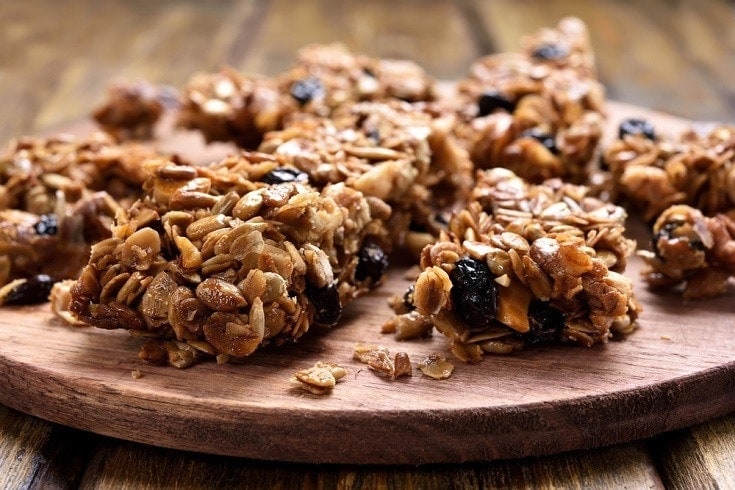
What are the Dangers of Feeding Cats Granola?
The two main ingredients used in granola are rolled oats and puffed rice. Cats are not capable of properly digesting the nutrients found in whole grains. Because granola is not part of a feline’s natural diet, it will take longer for them to digest these types of foods. If you were to only give your cats granola to eat, they would eventually become malnourished, experience diarrhea and constipation, or suffer from obesity.
The Nutritional Value of Granola
Believe it or not, granola isn’t all that rich in nutrients. It’s only when we add fruits and nuts to the mix that it becomes more beneficial to us. When you know that cats already can’t absorb these nutrients, it’s better to avoid feeding them granola altogether.
Granola tends to be high in sugar and carbohydrates and both of these could create some health problems in your cat. Sugar affects a cat’s blood sugar and increases insulin production in their bodies. Carbs can be dangerous for cats because they put a strain on the pancreas, and cats also lack the enzymes required to break the carbs down. In reality, feeding them granola on a regular basis could cause more problems in the long run.

Other Ingredients Found in Granola
Your cat eating granola every once in a while likely won’t cause any harm. It‘s the other ingredients added to granola that you have to be more cautious with.
Dairy
Dairy like milk or yogurt is often added to granola, but cow’s milk is potentially harmful to cats as most are lactose intolerant. This means that they lack the enzyme required to digest the milk sugar lactose in their intestines.
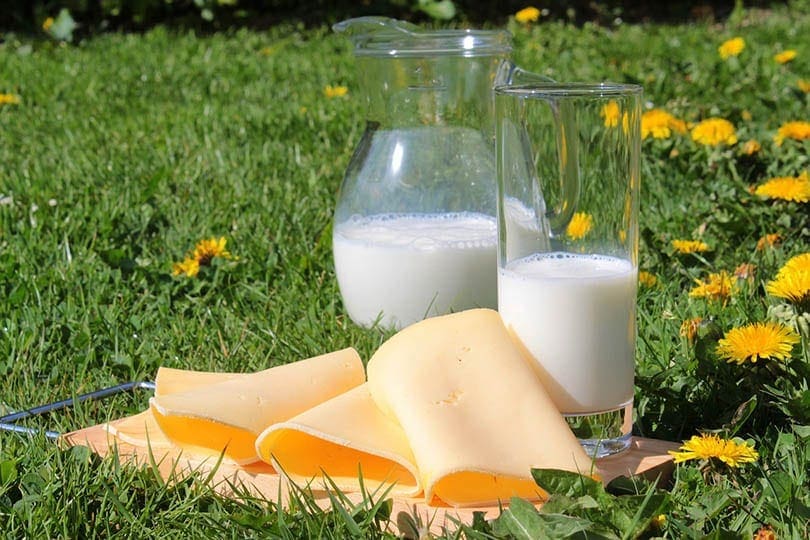
Honey
Honey isn’t technically poisonous to most cats, although there are some mature cats that do not react well to it. Even small amounts of honey could upset your pet’s digestive tract and cause vomiting, upset stomach, diarrhea, and lethargy.
Berries
Some fruits are safe for cats, and others are highly toxic. For example, blueberries and strawberries are safe and high in fiber and water content. On the other hand, grapes, raisins, and plums could have deadly results. This is the perfect example of why you have to be especially careful about the additional ingredients added to granola.
Almonds
Almonds and other nuts are dense in nutrients and omega-3 fatty acids. Even though they are great for humans, your cat might struggle to metabolize these foods.
Now that you know what you can safely feed your cat, it’s just as important to find a bowl that supports their health and well-being. With whisker-friendly bowls and a wide tray to catch any spills, our Hepper NomNom Cat Bowl is our favorite option.
 Final Thoughts
Final Thoughts
Cats don’t require the variety of foods that humans do. In general, they can eat commercial cat food for every meal and get everything they need to live a long and healthy life. On the other hand, eating the same thing repeatedly could lead to digestive problems and malnutrition.
It makes sense that you’d want to feed your cat the foods that bring you joy and make you feel energized. Unfortunately, cats’ bodies don’t work the same as ours. If your cat got into some granola, you likely don’t have to panic and assume that they’re going to get sick, but even though it is technically safe for cats to eat plain granola, it isn’t recommended.
See also:
Featured Image Credit: Silviarita, Pixabay



 Final Thoughts
Final Thoughts